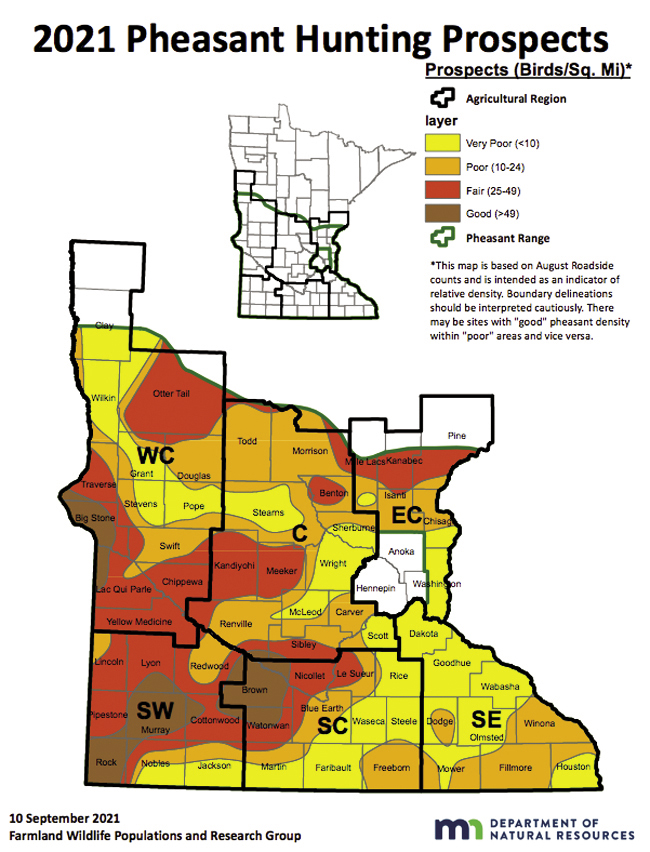
By Per Peterson
Despite an abnormally-dry summer and less-than-ideal roadside survey results, the 2021 pheasant season should be a good one in southwest Minnesota, widely regarded as a pheasant mecca.
The counts are a bit lower than last year — statewide, the average was 23% — but we’re still right at the 10-year average, and in some of the smaller sub-regions of the state, we’re actually above the 10-year average,” Tim Lyons, upland game research scientist for the Minnesota Department of Natural Resources told the Tracy Area Headlight Herald. “I think it’s going to be a really good season; I think it’s just that last year was a great year, so that makes this look like an average year.
The statewide roadside pheasant survey is done in the first two weeks every August. This year, the range-wide pheasant index (40.7 birds/100 mi) decreased 25% from 2020 (54.5 birds/100 mi) but is similar to the 10-year average (37.7 birds/100 mi). Weather conditions over winter and during the early nesting season were very favorable, but widespread drought could have adversely affected nesting or brood rearing conditions. Also, weather conditions during the 2021 survey were suboptimal which may have reduced detection of target species. Regionally, pheasants declined in all but the Southeast region and declines were greatest in the west central and central regions. The core pheasant range (west central, southwest, and south central regions) indices all exceeded the statewide average and were similar to or greater than their respective 10-year averages. The range-wide indices for gray partridge, mourning doves, white-tailed deer, eastern cottontail rabbits, and sandhill cranes were equivalent to 2020 indices, but like pheasants, exhibited regional variation in trends. Compared to 10-year averages, only mourning doves and deer showed any meaningful difference with doves decreasing 27% and deer increasing 32%.
See this week’s Headlight Herald for more on this article.
